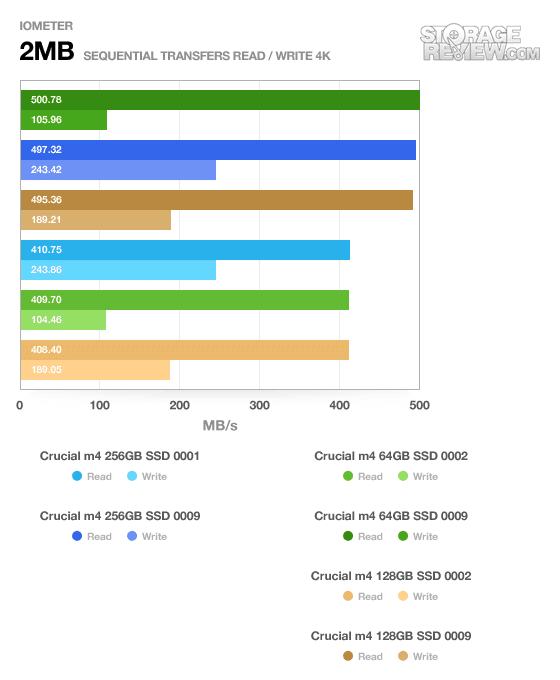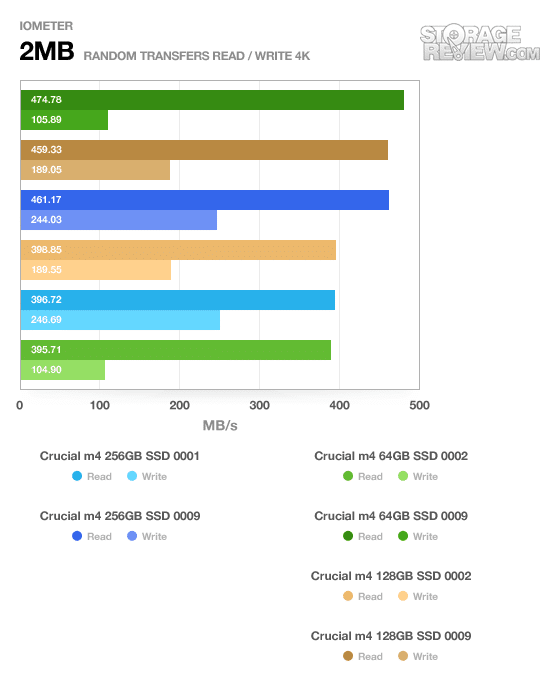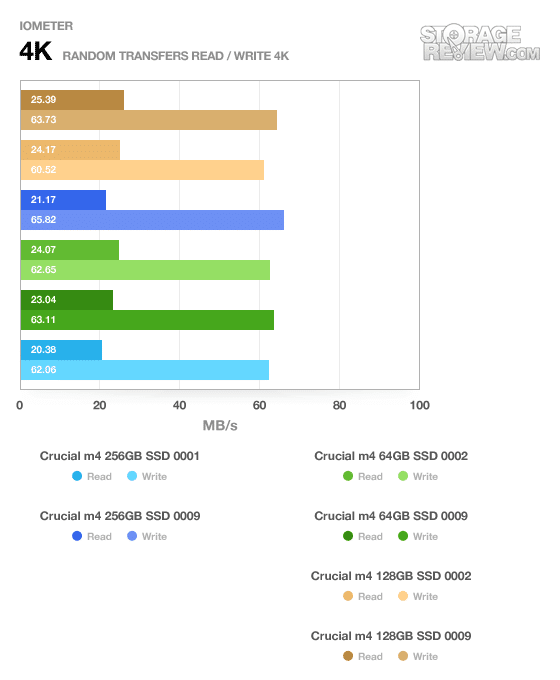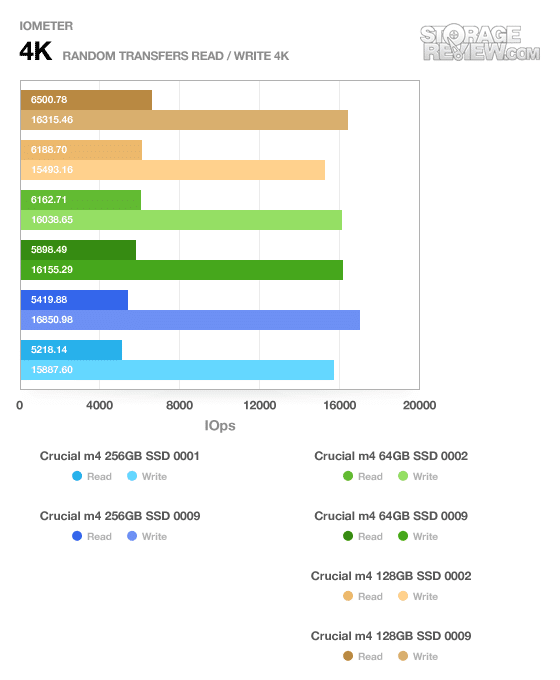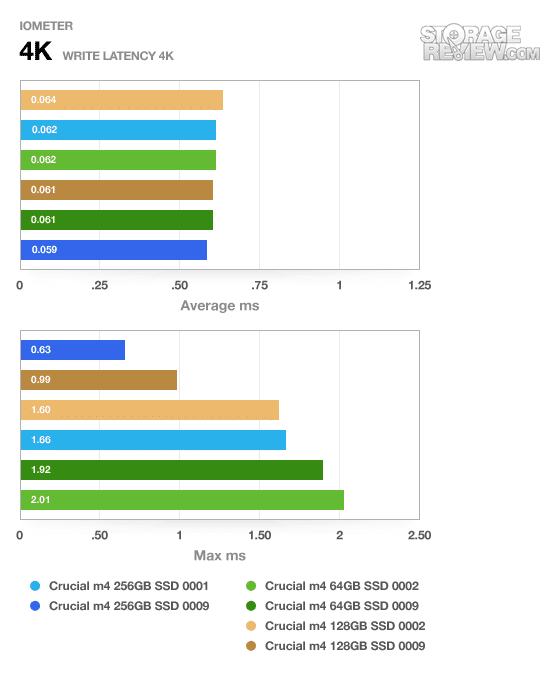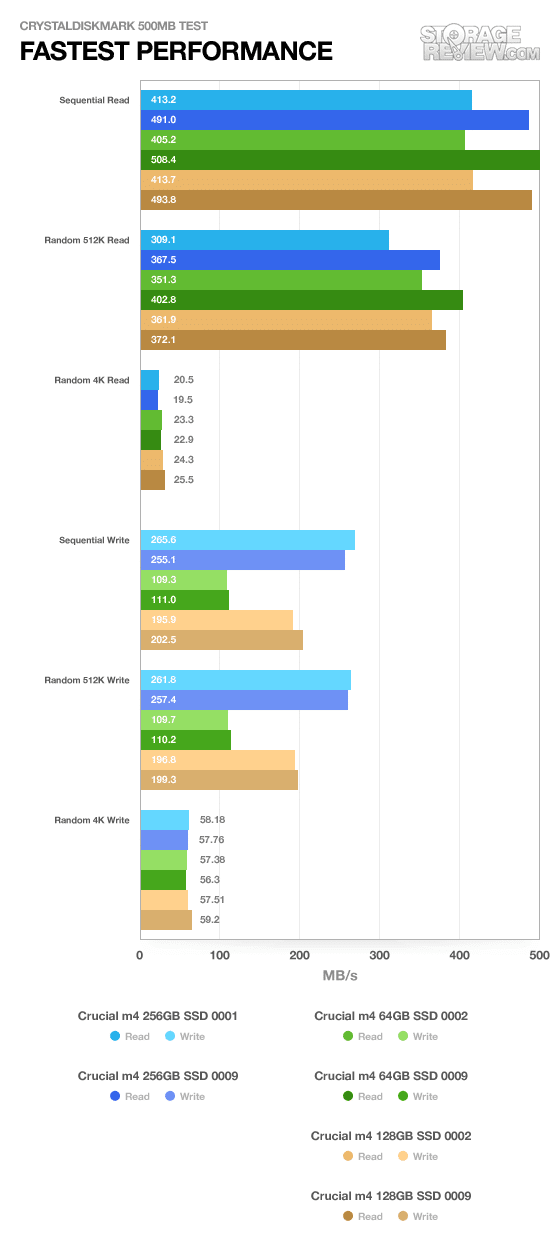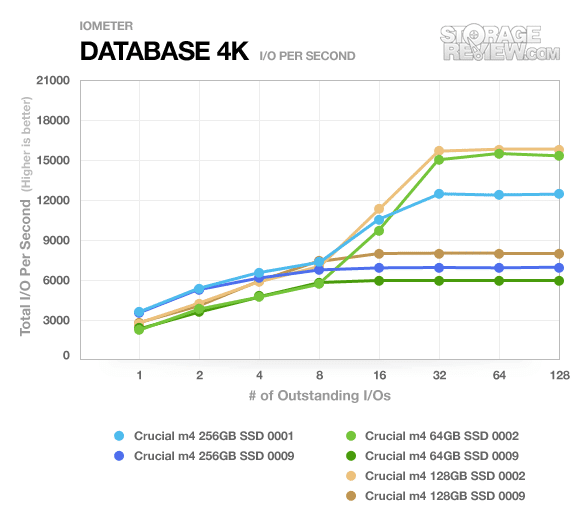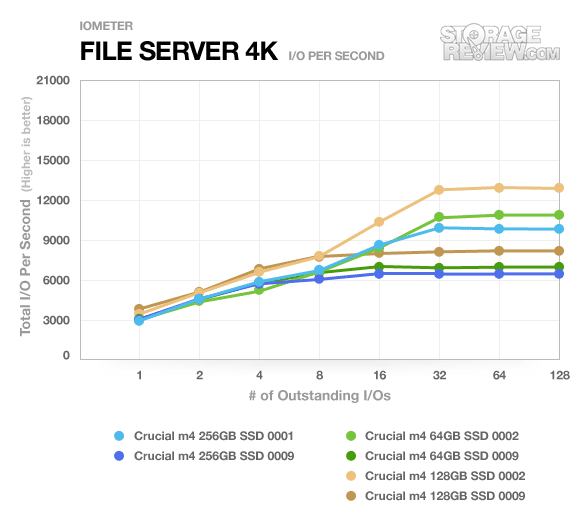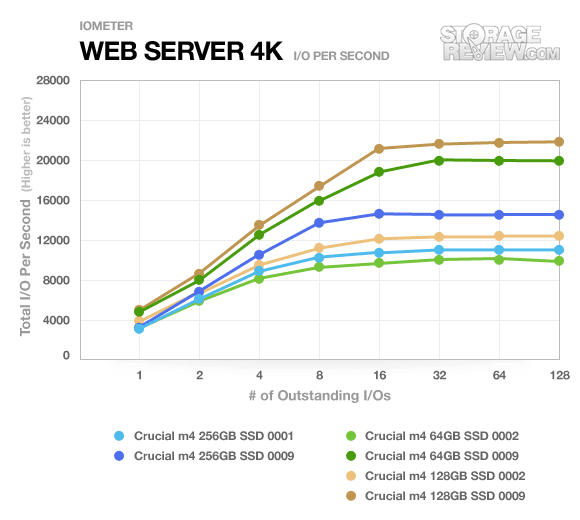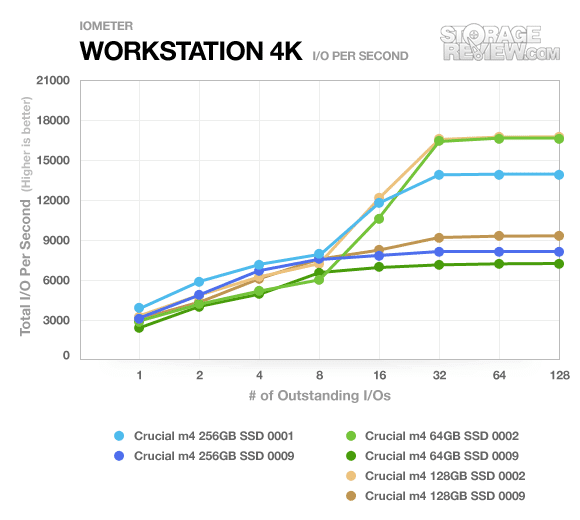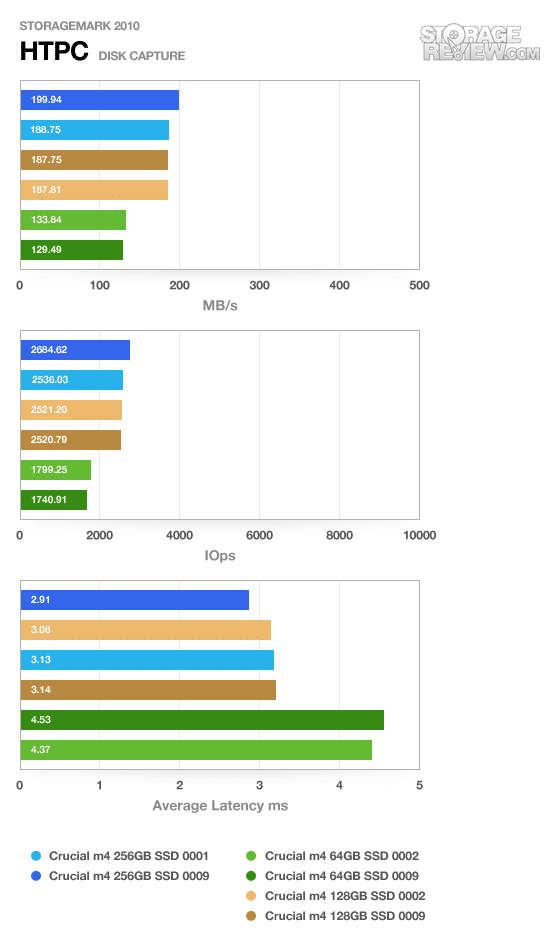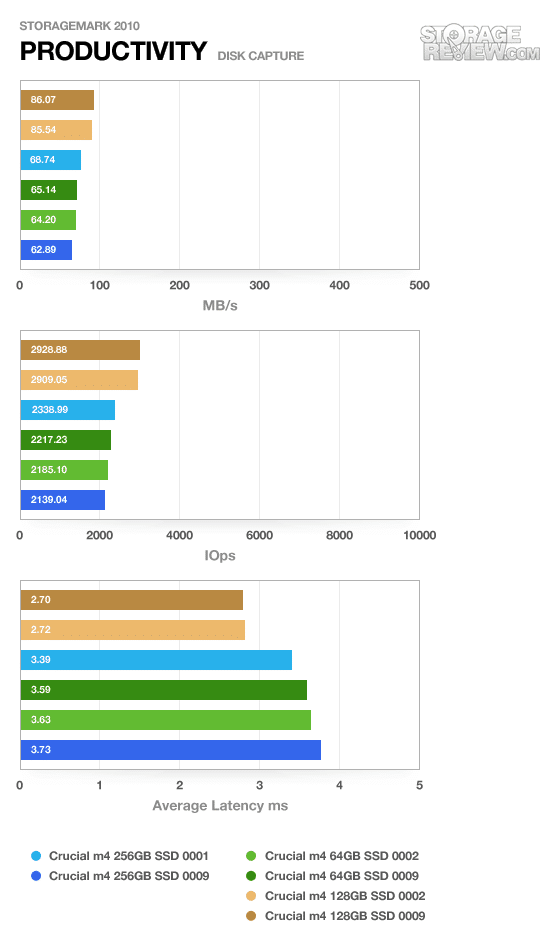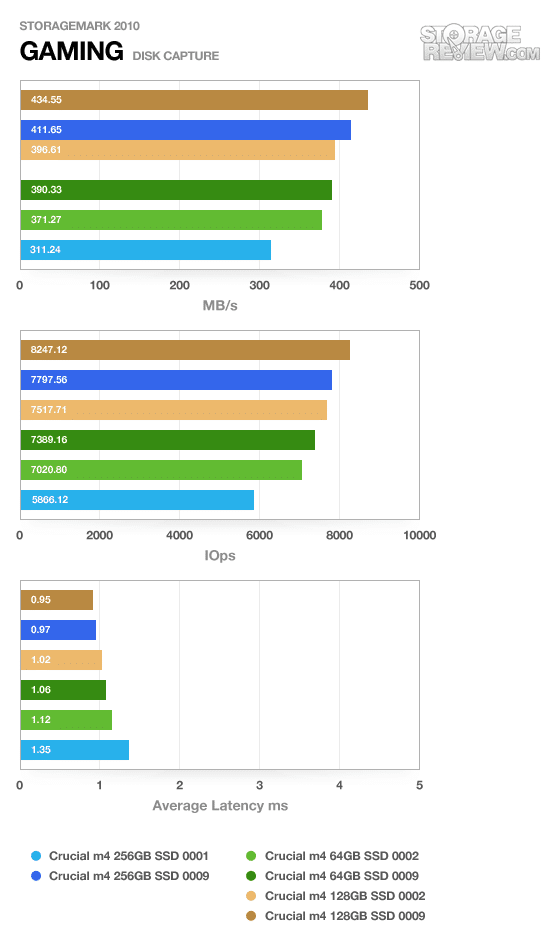We’ve looked at the Crucial m4 SSD in the past – once with the original firmware and then again with the updated firmware 0009. In this review we add in the data sets for the 64GB and 128GB versions with the old and new firmware. The goal: find out if they improve the same as the 256GB version we’ve already seen.
To avoid repetition, take a look at our
original review of the Crucial m4 for background information including specs and aesthetics. And here’s where you can find the
updated review that focuses on the differences between the original firmware and the new 0009 firmware. In short, Crucial fixed bugs, improved sequential read speeds by 20% and improved overall system compatibility.
Hardware Differences
From the outside it might be obvious that each different capacity m4 SSD has varying NAND amounts; but what some users might not be immediately aware of is this can play into the performance of the drive itself. We took a peek inside the 64GB, 128GB, and 256GB Crucial m4’s and looked at how each was setup internally. The 128GB and 256GB models share the same sixteen-piece 25nm IMFT NAND configuration, which to the shopper means full bandwidth and optimum transfer speeds to the SSD. The 64GB model though uses an eight-piece setup, which nearly halves the write speeds compared to the larger models. As you can see below, choosing the capacity of the drive will play a role in the performance.
Our synthetic benchmark tests will show the best possible performance these drives can achieve in real life. Carefully note the differences between the original firmware 0001/0002 drives and the latest firmware 0009-equipped drives.
Both the 64GB and 128GB drives show an 18-19% improvement in sequential read speeds exactly as Crucial promised. Note how the write performance improves significantly as the drive capacity increases.
This random transfer benchmark produces similar numbers; we’re seeing read performance improvements in the area of 13-17% across all drives, including the 256GB models. Write performance stays the same.
The 4k random transfer benchmarks use a smaller file size. We’re seeing performance improvements in the area of 3-4.5% in write speeds, which is not something we’d noticed in earlier benchmarks. This might be due to the fact this firmware also improves the latency; the more files that are accessed (as with a smaller file size), the more this comes into play. In addition, we also saw read speeds increase from 0.5-5%.
Here we can see the average latency improve a small but noticeable amount, especially in the maximum measurement; firmware 0009 produces numbers up to 40% lower than before.
The sequential read numbers at the top of the charts highlights the sequential read improvements with the new firmware we saw earlier in the IOMeter 2MB sequential transfer test. Additionally, we can see improvements in the random 512k read in the area of 13-17%. The write numbers don’t noticeably change – Crucial didn’t claim they would.
The next series of IOMeter benchmarks subjects the drive to a server-style workload; we expect to see a performance gain from left to right as the queue depth increases.
The old and new firmware-equipped drives trade places with one another throughout these benchmarks. They aren’t necessarily relevant for general consumers as this benchmark set is aimed at enterprise/server users.
This benchmark shows very little performance gain mainly due to the fact that this is a write-focused benchmark and the write speeds weren’t largely impacted by the firmware revision.
Again we’re seeing mostly small gains, around 2% overall. The latency drops as promised, though.
The read-focused gaming benchmark shows significant gains in the area of 5% and 9% for the 64GB and 128GB drives, respectively; the 256GB drive shows up to a 25% gain, likely due to its much better write performance. In addition the average latency fell across the board for drives with the new firmware.
Crucial has a real winner on its hands with the m4; this latest firmware 0009 bumps the performance up a notch and, combined with the company’s aggressive pricing, makes it one of the better choices for a modern SATA III SSD. We observed read performance increases in the area of 13-18% with the new firmware on the 64GB and 128GB drives (the 256GB drive showed higher gains). Additionally the average latency dropped consistently in all our benchmarks. Write performance did not improve though was already respectable; it certainly didn’t decrease. We noticed a small performance drop for server-style applications, but this isn’t entirely relevant for non-enterprise customers.
With increased system compatibility, tier-1 Micron NAND and great pricing we can safely give the Crucial m4 family our full recommendation.

